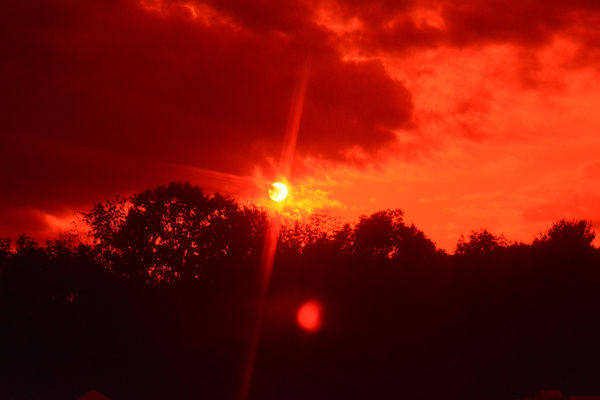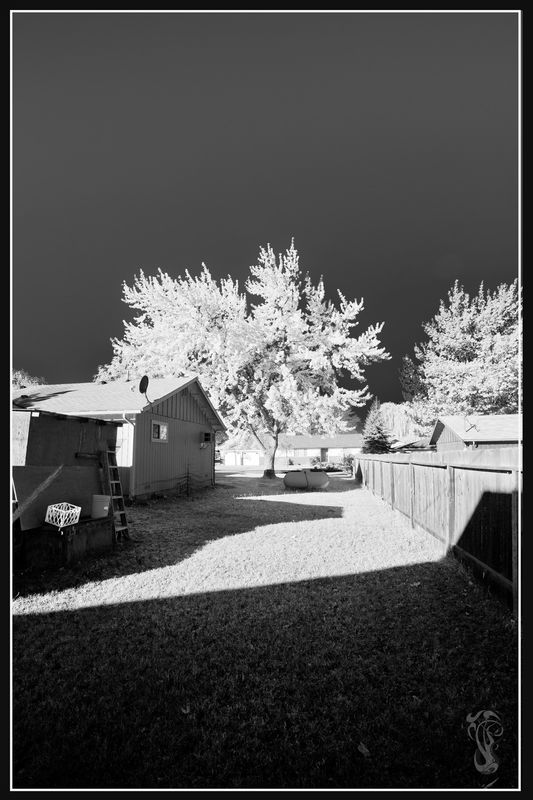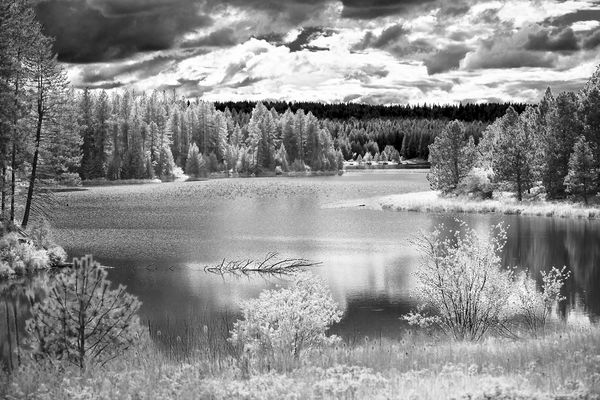Infrared Digital Photography
Jan 11, 2018 09:37:57 #
Years ago while in grad school I was involved in taking photos using IR film. As I recall our lab was interested more in structure and texture of objects, rather than color.
I know that I could get one of my old DSLR's (perhaps a Nikon 3100) modified to respond only to IR. I'm not sure I want to spend the money.
So, my question(s) are, there any ways of post processing that comes close to the IR effect? Current programs with presets and filters?
Have any of you setup your processing programs to try and emulate the effect?
I have Photoshop, LR, Affinity, Topaz and Luminar on my computers.
Thanks
I know that I could get one of my old DSLR's (perhaps a Nikon 3100) modified to respond only to IR. I'm not sure I want to spend the money.
So, my question(s) are, there any ways of post processing that comes close to the IR effect? Current programs with presets and filters?
Have any of you setup your processing programs to try and emulate the effect?
I have Photoshop, LR, Affinity, Topaz and Luminar on my computers.
Thanks
Jan 11, 2018 09:40:03 #
sueyeisert
Loc: New Jersey
Lightroom I think has an IR preset. Why not get a mirrorless camera and convert it to IR.
Jan 11, 2018 11:40:45 #
Try using an IR filter for digital cameras. I picked up a few different filters last year and they work pretty well. I think there are many different light ranges to choose from. The 720nm worked best for me.
Jan 11, 2018 11:53:12 #
Bike guy wrote:
Years ago while in grad school I was involved in t... (show quote)
The post processing methods are artificial and are designed fool our eyes into thinking it was taken using an IR camera. But in reality, there is no IR information saved in the file, thus things you may look for will be missing.
Using a modified body that is modified as full spectrum is the best way to go as you can try various external filters to see what you are looking for.
An unmodded camera can see a bit of IR, but it is greatly attenuated and is mostly just beyond red. Some cameras are better at this than others.
You can find many modified cameras on eBay. I have two of them. Also, some lenses are better for this than other lenses. Some exhibit a hot spot in the center, and some are constant corner to corner. The cheaper lenses tend to exhibit this problem, and it gets worse the more you stop down.
Jan 11, 2018 12:44:59 #
This is a lanscape with the IR filter. I don't have anything where there's a lot of heat on anything close-up.

Jan 11, 2018 13:07:48 #
Bike guy wrote:
Years ago while in grad school I was involved in t... (show quote)
Yes, it is easily done in ACR (Adobe Camera Raw), it takes maybe a couple of minutes if that and you'll be hard pressed to see a difference!
Jan 11, 2018 13:11:31 #
speters wrote:
Yes, it is easily done in ACR (Adobe Camera Raw), it takes maybe a couple of minutes if that and you'll be hard pressed to see a difference!
I think most photographers who have used IR converted cameras, or shot IR film, can tell the difference between real IR and faux software imitations. Most forums for IR photography will not allow faux IR.
Jan 11, 2018 13:17:23 #
Bike guy wrote:
Years ago while in grad school I was involved in t... (show quote)
Simulated IR in post never looks like the real thing.
You can get an old Nikon D70, and Lifepixel will convert it for you for around $250. It's worth every penny.
Jan 11, 2018 17:47:34 #
JohnSwanda wrote:
I think most photographers who have used IR converted cameras, or shot IR film, can tell the difference between real IR and faux software imitations. Most forums for IR photography will not allow faux IR.
Let add that if one want to use IR to study some object, the faux IR does not contain real information that is going to be useful. Faux IR is only a gimmick to make the image look like it was taken with IR. Its worthless for what the OP intends to use it for.
Jan 11, 2018 18:36:19 #
Ive used these directions for photoshop, works ok
https://photography.tutsplus.com/tutorials/creating-an-infrared-effect-using-photoshop--photo-6056
https://photography.tutsplus.com/tutorials/creating-an-infrared-effect-using-photoshop--photo-6056
Jan 11, 2018 18:48:35 #
bdk wrote:
Ive used these directions for photoshop, works ok
https://photography.tutsplus.com/tutorials/creating-an-infrared-effect-using-photoshop--photo-6056
https://photography.tutsplus.com/tutorials/creating-an-infrared-effect-using-photoshop--photo-6056
I think that's all you can say, works OK. But when you compare it with someone who is very good at doing real IR, it can't compare.
Jan 11, 2018 18:54:11 #
Gene51 wrote:
Simulated IR in post never looks like the real thing.
You can get an old Nikon D70, and Lifepixel will convert it for you for around $250. It's worth every penny.
You can get an old Nikon D70, and Lifepixel will convert it for you for around $250. It's worth every penny.
These don't cost me a single penny, except a minute or so in ACR


Jan 11, 2018 21:38:00 #
speters wrote:
These don't cost me a single penny, except a minute or so in ACR
Yes, it looks like IR, BUT, the OP said he was interested in structure and texture of objects that show up in IR. He is not going to see this using simulated IR. This only shows up if shot with the right IR filter. There just isn't anyway around this.
Jan 12, 2018 06:15:15 #
I loved those 2 IR shots with the black sky in the 1st one but there were spots of black sky in the second one where there were no clouds. I have a specific application for black sky where it was blue. I rented a IR modified camera twice from the rental outfit telling them that these pictures were specifically what I wanted & needed to obtain. Despite several phone calls they were unable to tell me exactly how to do it. Even though Lifepixell had some exact samples on their web site I wanted to duplicate, they also were unable to tell me specifically how to do it with the modified camera I had. The rental outfit had very few examples or the ability to support a rental IR camera. Does anyone have a book that tells all about this with specific examples. They had magnificent IR color pictures on their website I could duplicate but not the Black sky shots? There are 2 major modifications that can be made & you have to know the differences in both modifications. What was the camera IR modification you used, the filter used etc? I sure would like to know. When I find out I'll have a full frame expensive camera modified. I've been in photography since 1936 & find IR a great new way to take pictures with many applications. What is your phone number? I need help on this matter & you seem to be the only one that knows specifically how to do it. Kenglanzer@goldenwest.net
Jan 12, 2018 08:44:40 #
Bike guy wrote:
Years ago while in grad school I was involved in t... (show quote)
Before you consider converting, check with LifePixel about that particular camera. Some convert better than others.
https://www.lifepixel.com/
If you want to reply, then register here. Registration is free and your account is created instantly, so you can post right away.





